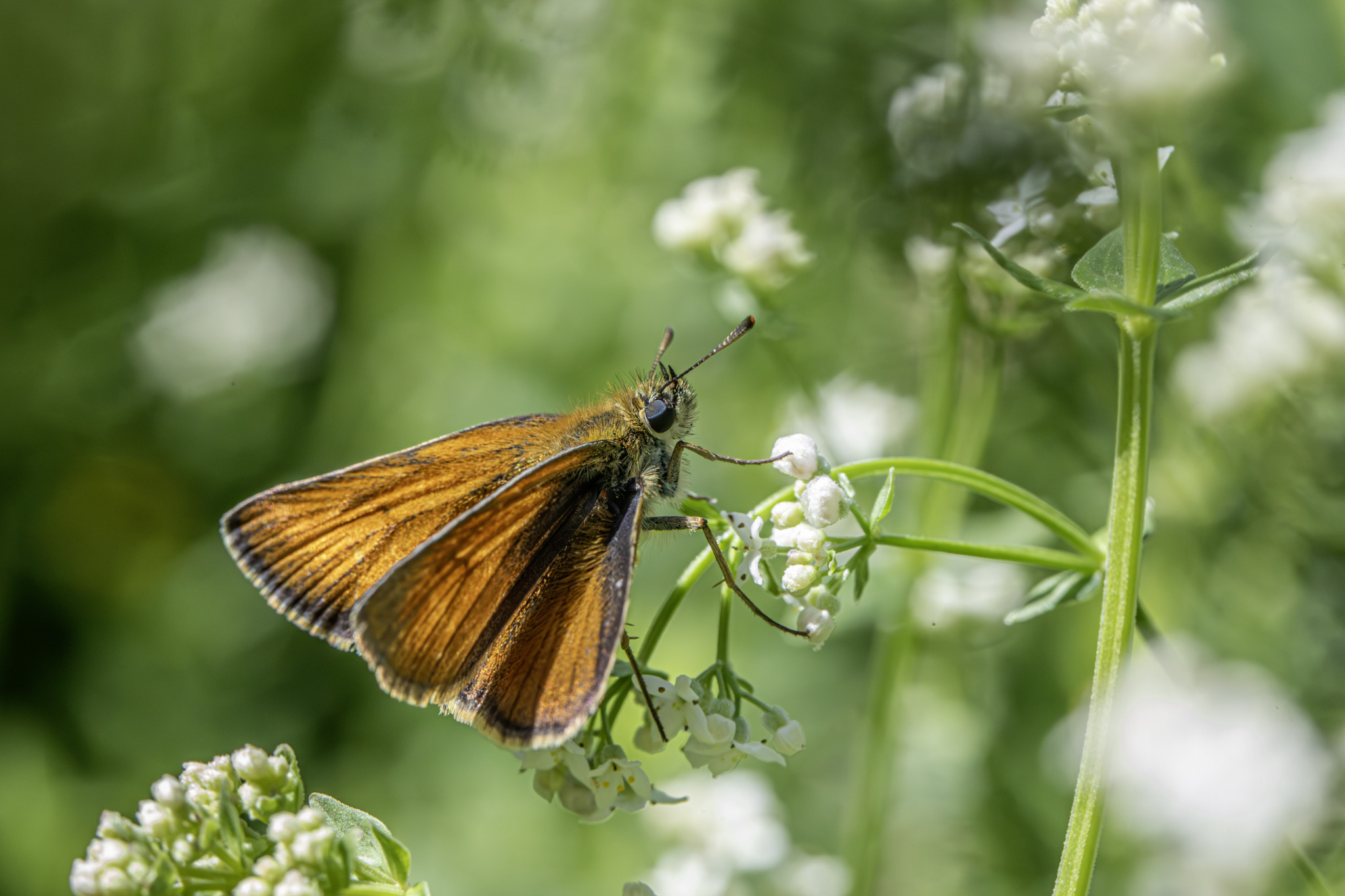The Small Skipper (Thymelicus sylvestris) is a small and energetic butterfly belonging to the Hesperiidae family. Its rapid flight and bright orange wings make it a delight to observe in grassy habitats. It is often seen basking in the sun or nectaring on wildflowers during the summer months.
Physical Description
- Size:
- Wingspan: 25–30 mm, making it one of the smaller skipper species.
- Coloration:
- Upperwings: Bright orange with dark brown borders; males have a narrow black sex brand (line of specialized scales) on the forewings.
- Underwings: Pale yellowish-orange with minimal markings.
- Antennae:
- Hooked tips, characteristic of skippers, and distinguishable from moths.
Behavior
- Flight:
- Darting and rapid, often close to the ground.
- Activity Period:
- Flies from June to August, with a single brood per year.
- Feeding:
- Adults feed on nectar from flowers like thistles, knapweed, and clover.
Habitat
- Found in grassy and sunny areas, including:
- Meadows and grasslands.
- Roadside verges.
- Woodland clearings.
- Prefers locations with long grasses that serve as host plants.
Life Cycle
- Eggs:
- Laid singly on the stems of grass species, particularly Yorkshire Fog (Holcus lanatus) and other fine-leaved grasses.
- Larvae:
- Green with a dark head, feeding on grass blades.
- Overwinter within a silk cocoon attached to grass stems.
- Pupae:
- Formed in early summer, attached to grass stems or hidden in vegetation.
- Adults:
- Emerge in early summer, living for several weeks to mate and reproduce.
Distribution
- Widespread across Europe, extending into parts of North Africa and Asia.
- Common in the UK and temperate regions, often abundant in suitable habitats.
Conservation Status
- Classified as Least Concern, with stable populations in most areas.
- Sensitive to habitat loss due to urbanization and intensive agriculture.
Ecological Role
- Pollination:
- While feeding on nectar, adults contribute to the pollination of wildflowers.
- Food Source:
- Larvae and adults are prey for birds, spiders, and predatory insects.
Interesting Facts
- Mistaken Identity: Easily confused with the Essex Skipper (Thymelicus lineola), but the Small Skipper can be distinguished by its orange-tipped antennae (Essex Skippers have black tips).
- Temperature Preference: Often seen basking with wings partially open, allowing them to regulate body temperature.
- Grass Specialist: Its entire life cycle revolves around grasses, from egg-laying to larval feeding.
Summary
The Small Skipper (Thymelicus sylvestris) is a lively butterfly that adds vibrancy to grassy landscapes. Its reliance on natural grasslands highlights the importance of conserving these habitats. A common sight on sunny days, this butterfly’s darting movements and bright orange wings are a joy for nature enthusiasts to behold.
Visited 850 times, 4 visit(s) today
Views: 1360
Subscribe to the newsletter:
